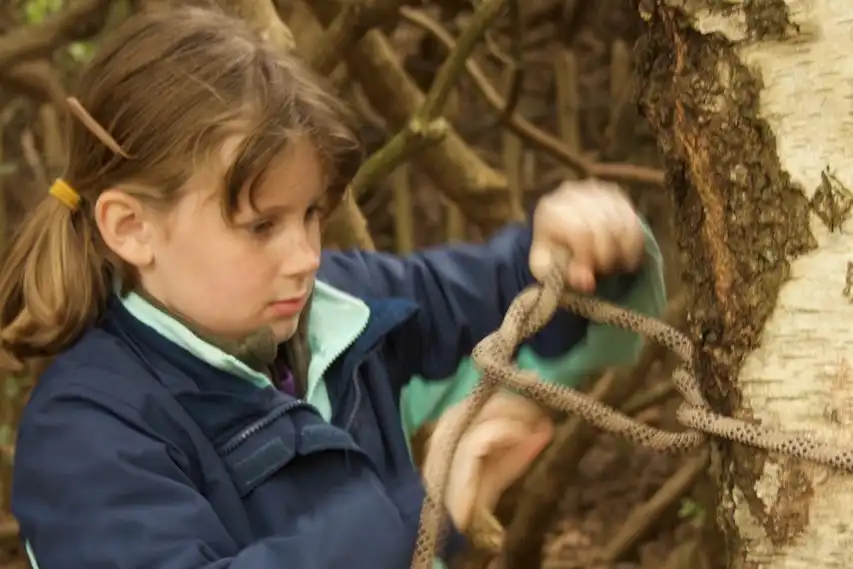
9 tips for planning a great Primary School Trip
Embarking on a primary school trip is a thrill for both students and educators alike. It offers a unique opportunity for experiential learning outside the traditional classroom setting. Planning a great primary school trip doesn’t need to be stressful.
If you’re gearing up for a residential school adventure, our tips are here to guide you to ensure your trip runs seamlessly.
1. Visit the site before your trip
Before venturing off on your trip, take the time to visit the venue. Most reputable providers, including Rootd Adventure, welcome teachers for pre-visits. Schedule a visit in advance to assess the site, identify from your provider how trips typically run best, and confirm trip details such as dates and timings. Taking time to understand the accommodation and the centre will help you to ensure your pupils get the most out of their trip.
2. Create a timeline for your primary school trip
Stay on top of deadlines by creating a detailed timeline for your trip. Allocate time for crucial tasks such as booking transport, drafting risk assessments, and collecting payments. An organised spreadsheet can help you track essential information and ensure nothing slips through the cracks.
3. Talk to parents
Communication is key when it comes to involving parents in the trip-planning process. For day trips, send out detailed letters outlining trip details and requirements. For residential trips, consider hosting an information session to address parents’ concerns and questions. At Rootd we can visit your school to present to parents to answer any questions and address any concerns. It’s perfectly normal for parents to be a little anxious with younger age groups in particular.
4. Make your primary school trip affordable
Ease the financial burden on parents by exploring cost-saving options and offering flexible payment plans. Encourage the sharing of equipment among students to reduce expenses and promote sustainability. Trips in well connected areas like our site in Hertfordshire can help to reduce the cost of travel which often are a large proportion of a trip’s total cost.
5. Assess the risks
Prioritise safety by conducting thorough risk assessments and adhering to legal staff-to-student ratios. Collaborate with providers to address potential hazards and ensure adequate supervision throughout the trip. Be prepared with first aid provisions and staff members trained in handling medical emergencies. Reputable providers, including ourselves have fully trained camp staff for every trip. Your pre trip visit to site is also the ideal time to conduct your risk assessments. Reliable providers like Rootd provide copies of risk assessments for all the activities that will make up your trip. It’s a good idea to look for a provider who has the Learning outside the classroom accreditation.
6. Plan the itinerary
To get the most from your trip adventure it’s worth carefully planning the itinerary for your trip and coordinating timings with transportation providers. Anticipate any scheduling conflicts and have contingency plans in place for unforeseen delays. Keep students engaged with a well-structured daily itinerary and backup activities for downtime. Good planning here with the help of a good trip provider means your students get the most time to enjoy the outdoors and the activities on the trip.
7. Talk with your team
Equip your team with all necessary information and resources to ensure a smooth trip experience. Distribute comprehensive packs containing risk assessments, medical information, itineraries, and safeguarding protocols. Conduct a pre-departure meeting to clarify roles and responsibilities and address any concerns.
8. Set expectations for your primary school trip
Establish clear guidelines for student behaviour and expectations during the trip. Communicate rules and regulations in advance, emphasising the importance of responsibility and respect for others. Address concerns and provide guidance on personal belongings to mitigate potential conflicts.
9. Collect spare equipment
Prepare for the unexpected by stocking up on spare essentials such as water bottles, sleeping bags, and clothing. Encourage parents to label belongings to facilitate the return of lost items. Rootd Adventure recommends having a contingency plan for common forgetful moments to ensure everyone enjoys a comfortable trip. A checklist in plenty of time before the trip can help, at Rootd we send a detailed checklist 12 weeks before every trip.
Summary – planning a great trip
Planning a primary school trip can be hugely rewarding. Providing your students with an opportunity that fosters experiential learning and personal growth to compliment their learning in the classroom. Follow the tips here and you can create unforgettable experiences for your students while ensuring their safety and well-being.
If you’re seeking an immersive and educational school trip experience, Rootd Adventure is here to support you every step of the way. Contact us today and let’s create the perfect primary school trip tailored to your needs.